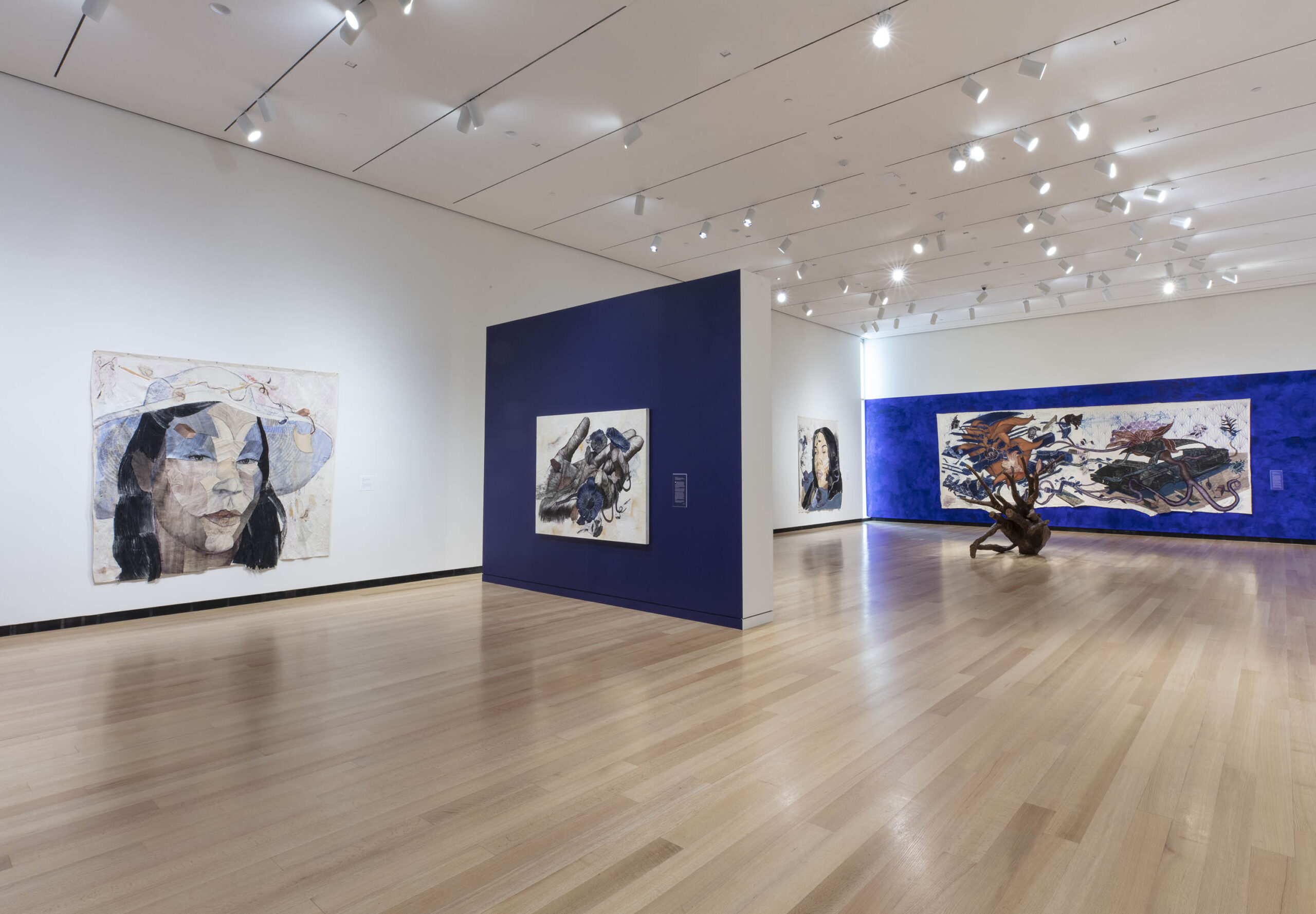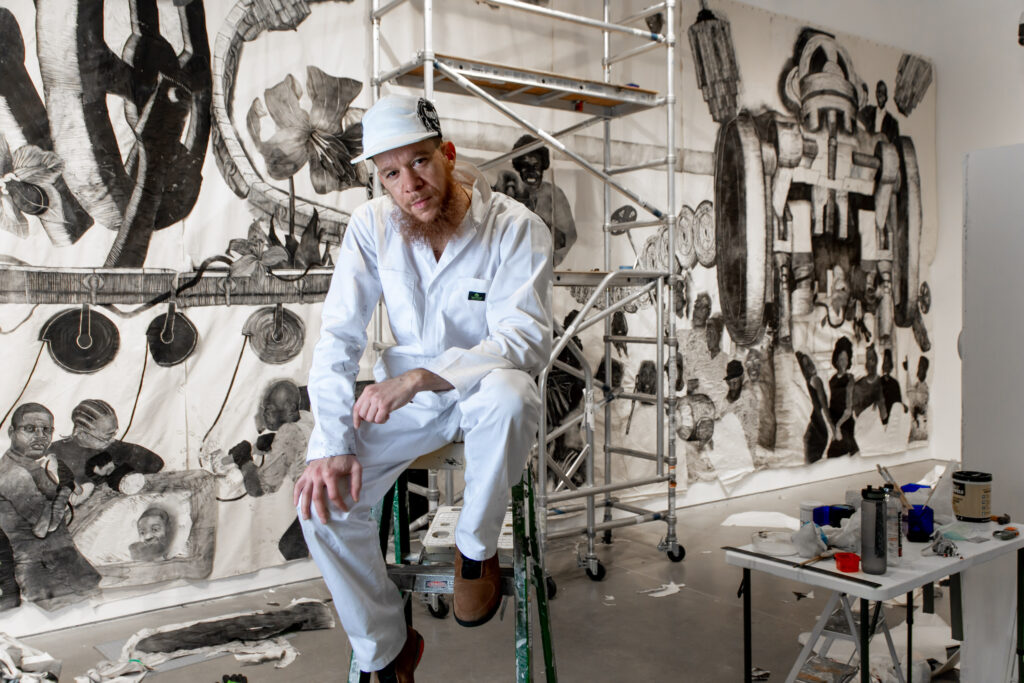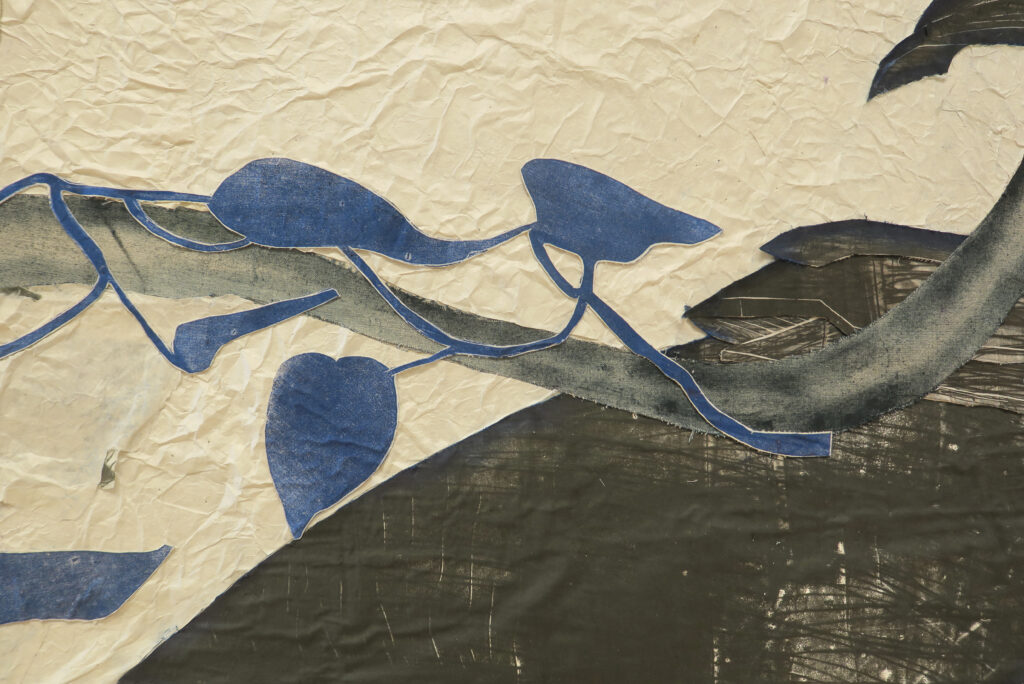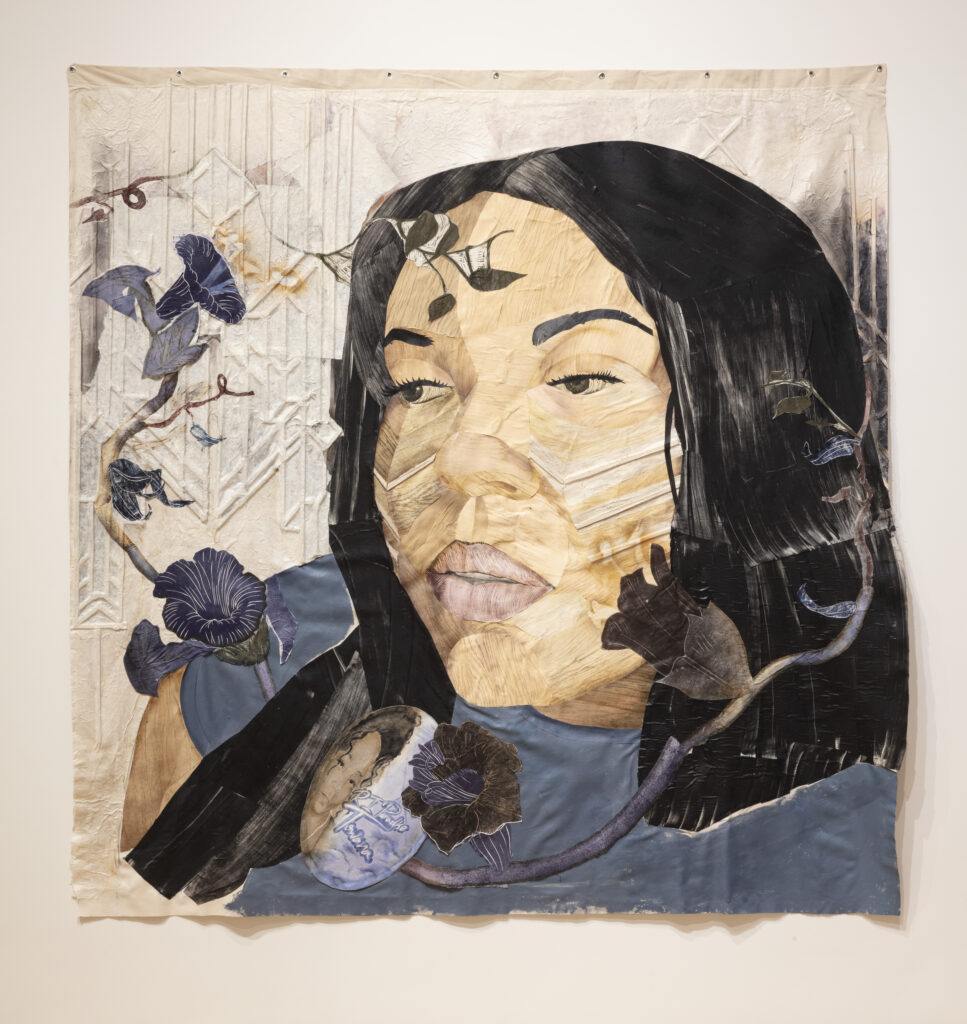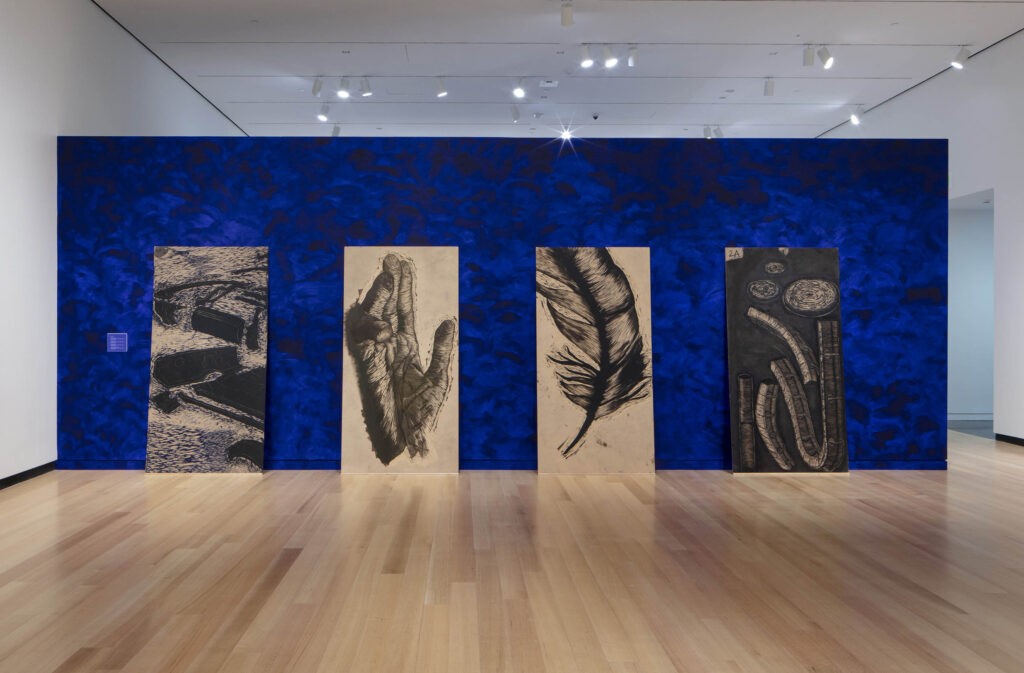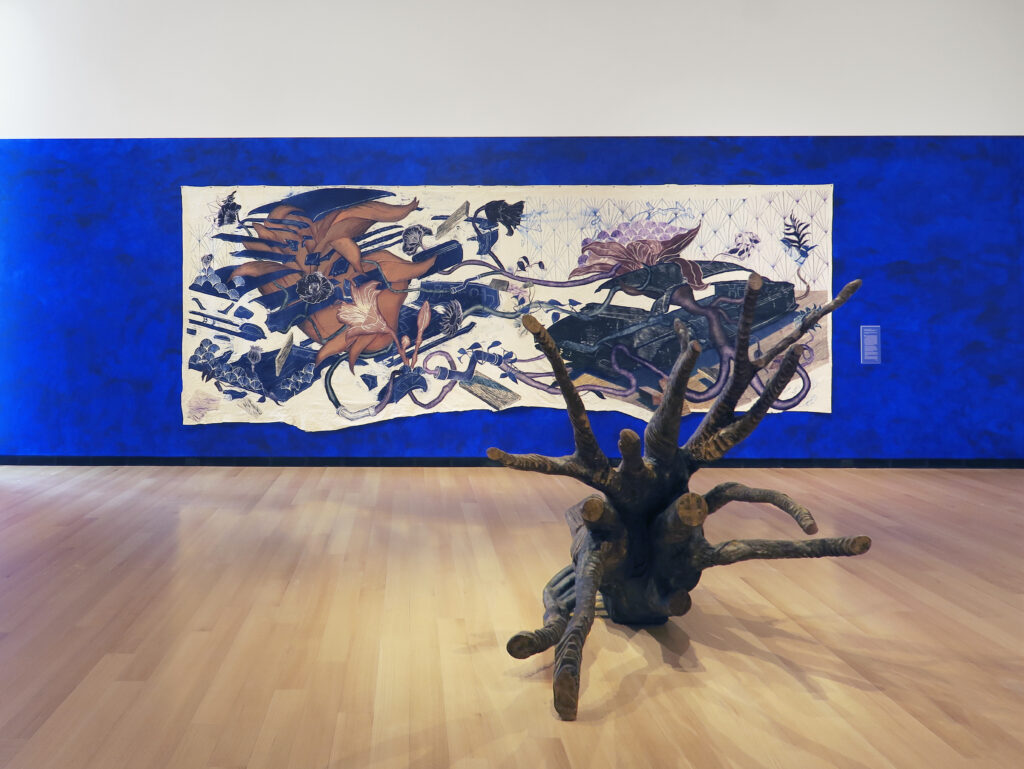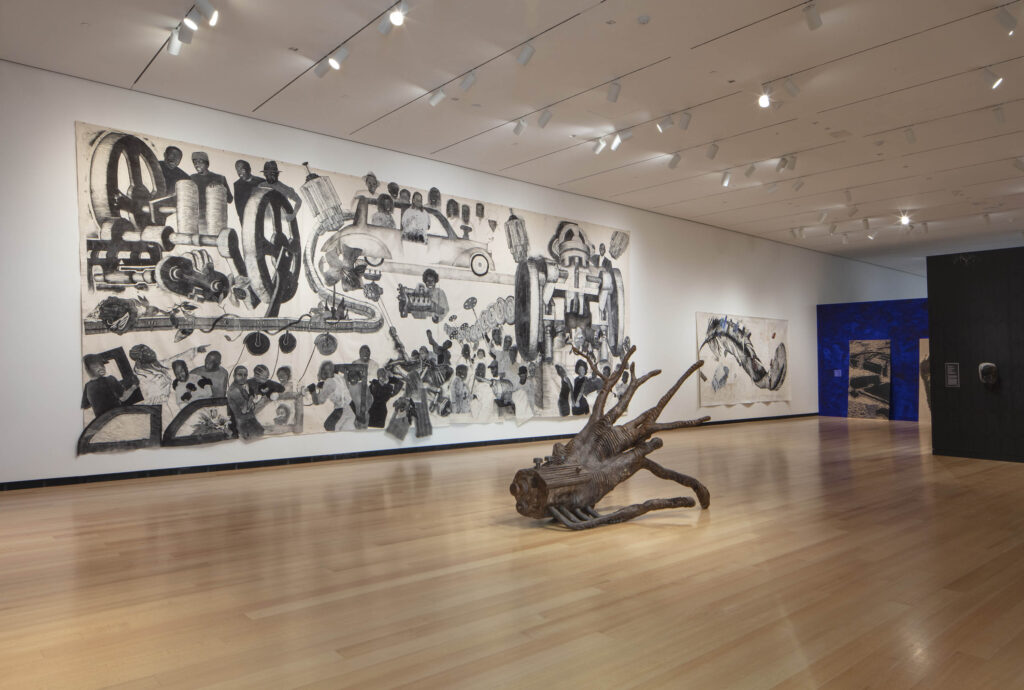For over 100 years, the Detroit car industry has been an important part of American history, influencing how Americans all over the country move around and live their everyday lives. Not surprisingly, the massive scale of that industry would also have a huge impact on Detroit’s development, including its economics, culture, and urban planning. And, for Brooklyn based artist Yashua Klos that influence has been on a more intimate, personal scale. And that heightened awareness of that industry’s role in his familial roots is at the center of Yashua Klos’ art and exhibit “Yashua Klos: OUR LABOUR” now on view at the Wellin Museum of Art at Hamilton College through June 22.
Two years ago, Klos was contacted by someone that had conducted a DNA search and found that they could possibly be related to one another. It turned out that indeed they were related and suddenly Klos, who was raised by a single mom, was connected to another side of his family with a multigenerational history of working at the Ford Motor Company in Detroit. That deeper knowledge of his background roots and the newly formed bond with his aunts, uncles, cousins inspired a whole new body of work for the artist. Informed by his interpretations of the industry that had been such a lifeline for his family members, the work at the exhibit draws heavily on references to the car manufacturing process (engines, gears, assembly lines, industrial apparatus) and more subtle architectonic mentions that celebrate the Art Deco splendor associated with Detroit at the era of the automotive industry peak.
“This exhibition is Klos’s first solo museum show, and it’s been an extraordinary collaboration,” states Tracy Adler, the museum’s director. “In 2017, we acquired a work by Klos for the Wellin’s collection, and we began to talk about what a major exhibition of his work might look like”. Commenting on the exhibit content, Adler says: “The works here span several media, and intersect many disciplines, hopefully providing many entry points for the Wellin’s diverse community of thinkers,” referring to the fact that the Wellin is part of a college and considered a learning museum and thus its exhibits aim to expand on the academic program.
One of the exhibit’s highlights is a mixed-media collage on canvas entitled “When the Parts Untangle” featuring deconstructed car parts mixed with natural flora from Michigan. The sprawling piece (measuring 9 x 24 feet) was execute collaboratively with seven students from Hamilton College Arts program. Elaborating on the process of putting together the piece, Klos explained: “I found an exploded diagram of a nondescript model Ford car. It looked to me like an abstracted map. I carved and printed the car parts in blue ink on the left side of the canvas. Following this “blueprint,” the team of students reprinted each car part in black, assembled them to fit together, and attached the full car to the right-hand side of the canvas. We worked on this as a group might on an assembly line: carving, inking, printing, cutting out, and, finally, mounting directly onto the canvas. “
The color blue is of special interest for Klos. “I’m interested in the art historical value of blue, and its connection to class in our society,” says the artist. “I consider the values associated with terms like ‘blue collar’, ‘blue blood’, ‘the blues’ and ‘royal blue.” Beyond appearing in some of the mostly black and white pieces, blue was also the color of choice for two backdrop walls in the exhibit.
“I’ve become aware of Terry Adkins’ work with blue as he researched George Washington Carver’s attempt to copywrite the blue long before Yves Klein’s attribution. Carver found this same blue originated from the Lapis Lazuli mineral of northern Africa and was used by ancient Egyptian pharaohs as the original color associated with royalty,” explains Klos.
The artist then goes on to explain how he achieved the unique blue tone using a textured and modelled blue paint: “In the way that I’m deploying this blue across the wall- there’s a layering of the pigment and some areas turn towards a deep velvety purple and nearly black. Painting it in this way has become kind of a formal experiment that has me thinking about a kind of inextricable relationship between black and blue. Of course, the layering effect here is also just striking to me. There’s something optical happening… something shifting that resists a kind of static or passive looking.”
On view through June 22nd.
https://www.hamilton.edu/wellin

